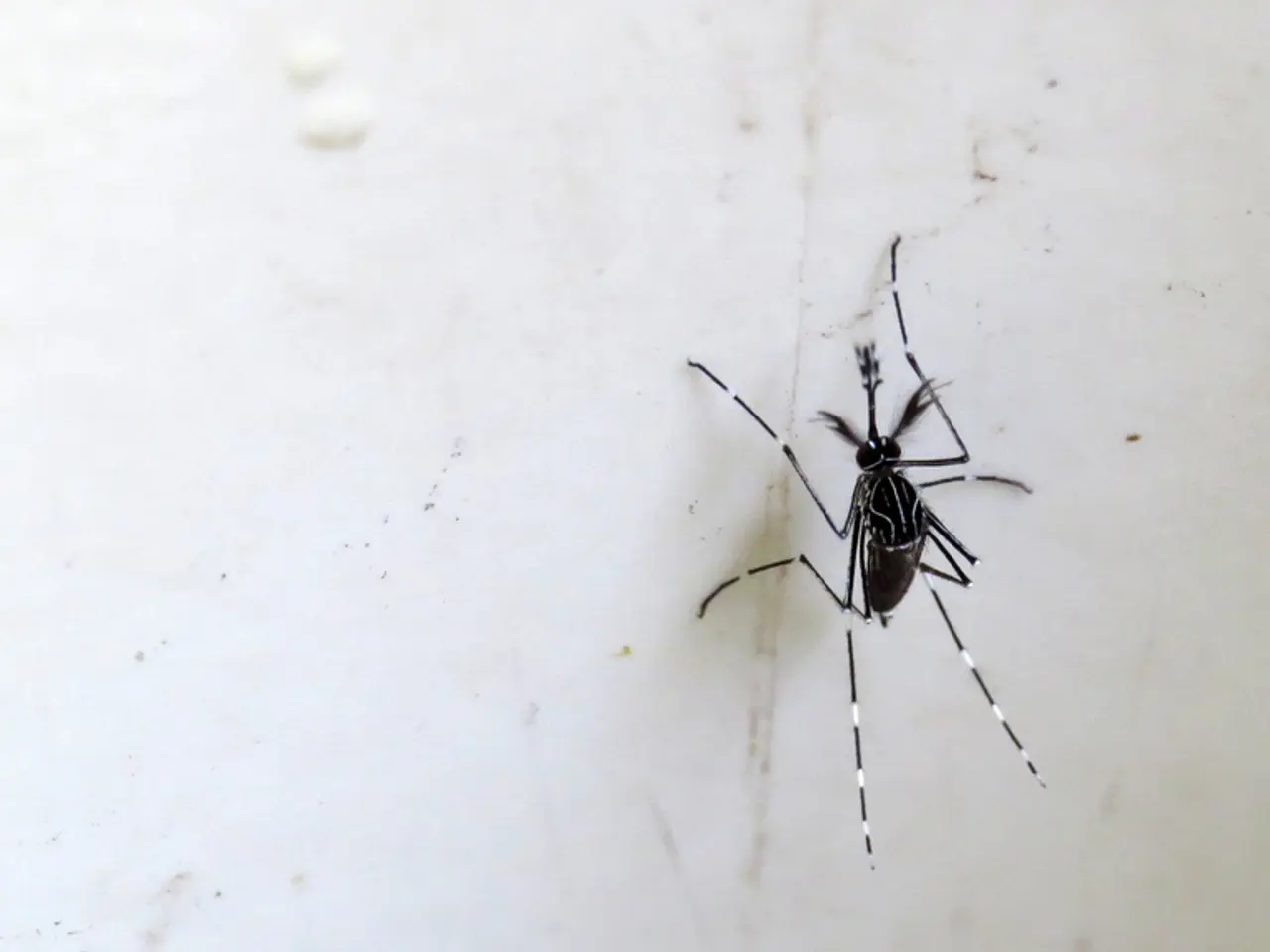Are Germans Cause for Concern Regarding the Chikungunya Virus?
In recent years, the Chikungunya virus has become a growing concern in Germany, with an increase in reported cases among travelers and a northward shift of the mosquito species primarily responsible for transmitting the disease.
The Chikungunya virus is primarily transmitted to humans via the bite of an infected female Aedes mosquito, specifically the yellow fever mosquito, Aedes aegypti, and the Asian tiger mosquito, Aedes albopictus. These mosquitoes, previously non-existent in Germany, are now widespread in states such as Bavaria, Baden-Württemberg, Rhineland-Palatinate, and Hesse.
Preventative measures for the Chikungunya virus focus primarily on avoiding mosquito bites and managing mosquito populations, as there is currently no licensed vaccine or antiviral treatment available. Key preventative measures include using insect repellents containing DEET, picaridin, or oil of lemon eucalyptus, wearing long-sleeved shirts and long pants, using mosquito nets, screen doors, and window screens, and eliminating standing water and other mosquito breeding sites.
Treatment options for Chikungunya consist of symptomatic relief, mainly using anti-inflammatory and pain-relief medications like acetaminophen or ibuprofen. No antiviral drugs or vaccines exist for Chikungunya, and treatment primarily involves pain and fever control. Cold compresses on swollen joints can help ease pain, and physical therapy may be recommended if joint pain and stiffness persist beyond the acute phase.
As of 2025, Chikungunya cases are rare in Germany, with the European Centre for Disease Prevention and Control (ECDC) reporting local cases mainly in France and Italy. However, the ECDC emphasizes the importance of vigilance and surveillance across Europe, including Germany, due to the increasing risk that diseases like Chikungunya will become endemic in Central Europe.
Travelers to or from endemic areas should be especially cautious and follow preventive measures diligently. Healthcare professionals should also be aware of Chikungunya for timely diagnosis and management. It is essential to remember that the name "Chikungunya" originates from a Makonde language phrase, meaning "the one who walks bent over."
Symptoms of Chikungunya include high fever, severe joint pain (often in wrists, ankles, and knees), joint swelling, muscle pain, headache, rash, nausea, fatigue, and sometimes gastrointestinal or eye symptoms. The disease can be life-threatening for older people and those with underlying health problems.
In conclusion, while Chikungunya cases remain rare in Germany, the increasing number of infected mosquito species and cases among travelers highlights the need for vigilance and preventative measures. By following recommended guidelines and staying informed, individuals can help reduce their risk of contracting this debilitating virus.
In the context of health and wellness, the increasing number of Aedes mosquito species, primarily responsible for transmitting the Chikungunya virus, in Germany could have significant implications for medical-conditions, including the potential for Chikungunya to become endemic in Central Europe. As the impact of climate-change on mosquito populations is a growing concern, further studies in environmental-science could provide valuable insights to help manage and mitigate the spread of diseases like Chikungunya.




